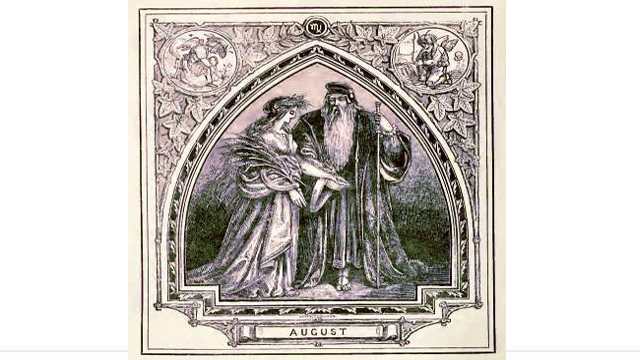Discover Lughnasadh: The Origins of Lammas Day Celebrations
August 1st marks a significant day in the calendar, known as Lughnasadh (pronounced Loo-nă-să) or Lammas Day. This ancient celebration, rooted in pagan traditions, honors the first fruits of the harvest, particularly the grain harvest. As Christianity spread throughout Britain, many of these customs were adapted and integrated into Christian practices, creating a rich tapestry of cultural significance that continues to resonate today.
Origins of Lughnasadh
Lughnasadh is named after the Celtic god Lugh, associated with skill, crafts, and the harvest. This festival was traditionally celebrated with feasting, games, and rituals to ensure a bountiful harvest. It was a time for communities to come together, give thanks for the crops, and prepare for the upcoming months.
With the advent of Christianity, the festival evolved into Lammas Day, which translates to “loaf mass.” The term hlæf-mass in Old English referred to a mass or feast celebrating bread, a staple of life. As the Christian faith took root, loaves of bread were offered in churches, symbolizing gratitude for the harvest. This transformation illustrates how ancient customs can adapt and survive through changing belief systems.
Language and Etymology
The linguistic evolution surrounding Lammas Day is fascinating. The Old English word hlæfdí (loaf-kneader) eventually morphed into the modern term “lady,” while hlæfweard (loaf-ward) became “lord.” The term “mass” in this context refers to a festival or feast day, similar to other celebrations like Michaelmas and Christmas. It is important to note that this usage of “mass” is distinct from the Catholic Rite of the Mass, which derives its name from the Latin phrase “Ite, missa est,” meaning “Go, it is the dismissal.”
Another name for August 1st is the Gule of August. The word “gule” comes from the Old English gwyl, meaning festival. While the ultimate origin of the term remains unclear, it shares a connection with “Yule,” which is synonymous with Christmas.
Historical Celebrations and Customs
In the past, Lammas Day was a time for hiring farm laborers at country fairs. Job seekers would often be identified by a straw or green stem in their mouths, symbolizing their readiness for work. One charming custom was the presentation of Glove Silver, where money was given to servants to purchase gloves. In Exeter, a large stuffed glove adorned with flowers and ribbons was paraded through the town, celebrating the day in a festive manner.
Additionally, the Catholic Church observed a tradition known as Peter’s Pence, where families contributed a penny for the Pope. This practice is linked to a legend involving the Roman Tribune Quirinus, whose daughter was cured of a throat ailment after kissing the chains of St. Peter. The feast day of St. Peter ad Vincula (St. Peter in Chains) coincided with Lammas Day, although the connection between the terms “vincula” (chains) and “gula” (throat) is considered tenuous.
Modern Celebrations
Today, Lammas Day is celebrated in various ways, often reflecting a blend of ancient customs and modern agricultural practices. Many communities hold harvest festivals, showcasing local produce and celebrating the importance of agriculture in sustaining life. Bread-making workshops, feasts, and community gatherings are common, allowing people to connect with their heritage and honor the cycles of nature.
In conclusion, Lughnasadh and Lammas Day represent a rich historical legacy that highlights the importance of harvest celebrations in human culture. As we gather to celebrate the fruits of our labor, we honor the traditions of our ancestors and the enduring connection between humanity and the land. Whether through feasting, community events, or simply reflecting on the bounty of nature, Lammas Day serves as a reminder of the cycles of life and the gratitude we owe to the earth.

